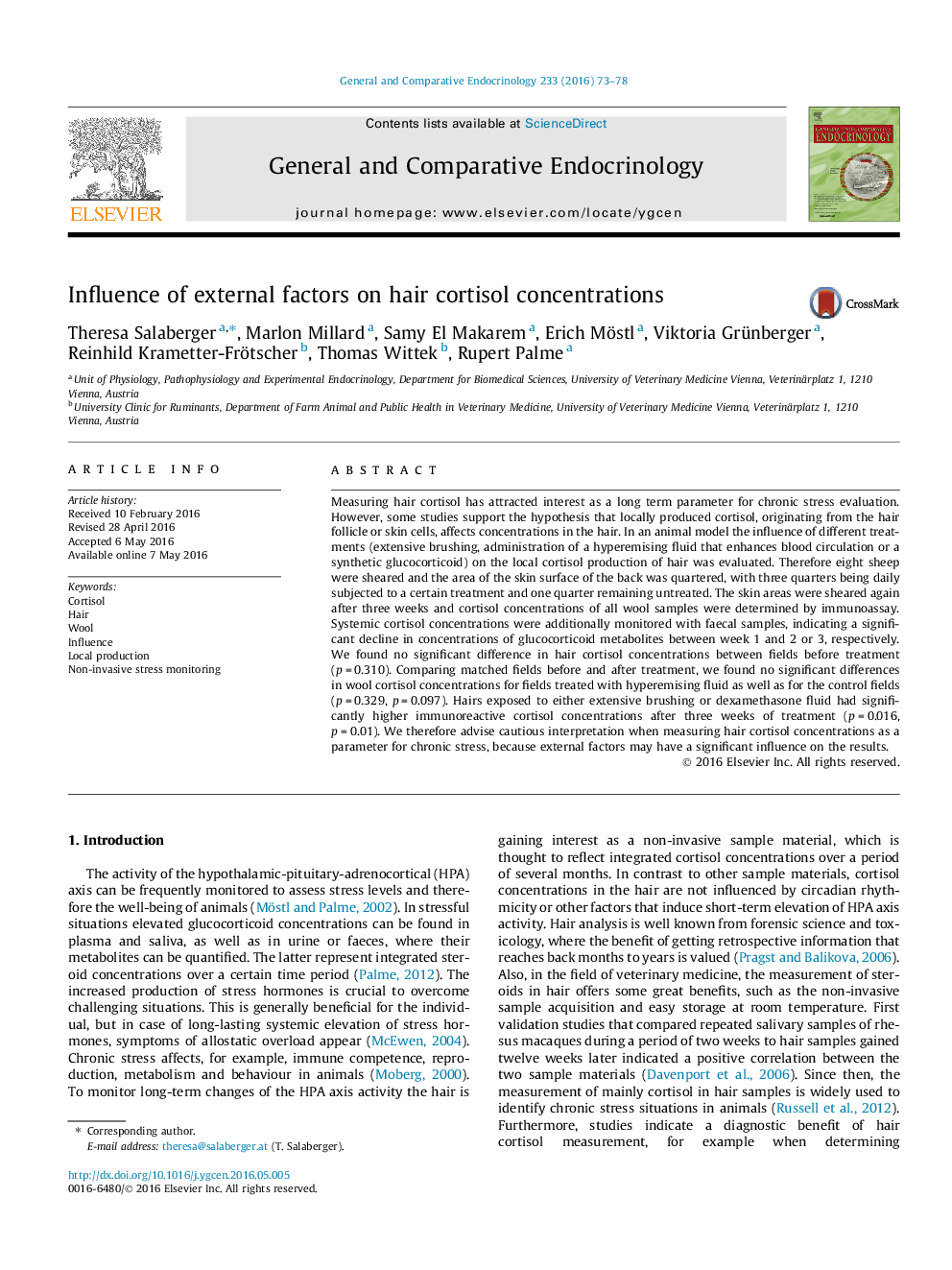| Article ID | Journal | Published Year | Pages | File Type |
|---|---|---|---|---|
| 5900840 | General and Comparative Endocrinology | 2016 | 6 Pages |
â¢We performed an in vivo experiment to evaluate local cortisol production of sheep skin.â¢Mechanical irritation increased hair cortisol concentrations.â¢Caution is advised when measuring hair cortisol as parameter for chronic stress in animals.
Measuring hair cortisol has attracted interest as a long term parameter for chronic stress evaluation. However, some studies support the hypothesis that locally produced cortisol, originating from the hair follicle or skin cells, affects concentrations in the hair. In an animal model the influence of different treatments (extensive brushing, administration of a hyperemising fluid that enhances blood circulation or a synthetic glucocorticoid) on the local cortisol production of hair was evaluated. Therefore eight sheep were sheared and the area of the skin surface of the back was quartered, with three quarters being daily subjected to a certain treatment and one quarter remaining untreated. The skin areas were sheared again after three weeks and cortisol concentrations of all wool samples were determined by immunoassay. Systemic cortisol concentrations were additionally monitored with faecal samples, indicating a significant decline in concentrations of glucocorticoid metabolites between week 1 and 2 or 3, respectively. We found no significant difference in hair cortisol concentrations between fields before treatment (p = 0.310). Comparing matched fields before and after treatment, we found no significant differences in wool cortisol concentrations for fields treated with hyperemising fluid as well as for the control fields (p = 0.329, p = 0.097). Hairs exposed to either extensive brushing or dexamethasone fluid had significantly higher immunoreactive cortisol concentrations after three weeks of treatment (p = 0.016, p = 0.01). We therefore advise cautious interpretation when measuring hair cortisol concentrations as a parameter for chronic stress, because external factors may have a significant influence on the results.
